This Auburn front yard landscape was inspired by the last sentence of the initial interview with the Homeowner when she said, “Oh, and by the way, if you can make it be a Japanese garden, I’d love that.”
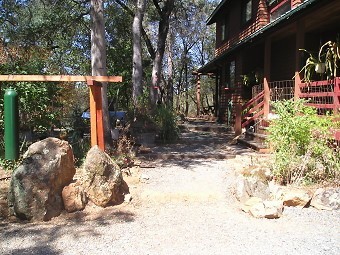
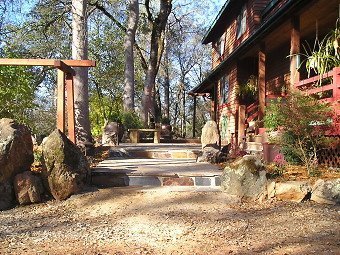
One of the most important functions of a landscape is to create a sense of arrival, which was lacking in the existing gravel pathway which had no delineated edges or perceivable elevation changes. The new flagstone path and steps create strong vertical and horizontal lines; the color contrasts in the flagstones provide interest without being overpowering. The tall vertical stone placed to the right of the path near the post echoes the vertical stones already in place, balancing out the two sides of the path. Notice how the bench in the middle distance creates a small, but unobtrusive focal point that leads your eye into the landscape. In the far distance, a large pot marks the end of the landscape. All of these changes help to create a dramatic and pleasant sense of arrival.
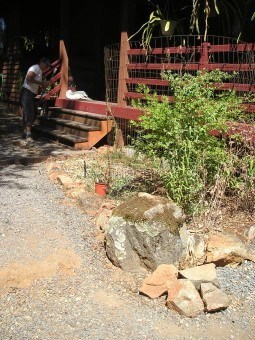
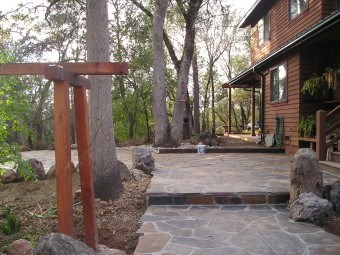
Even though only the hardscape is in at this phase, one can already see how the landscape is shaping up.
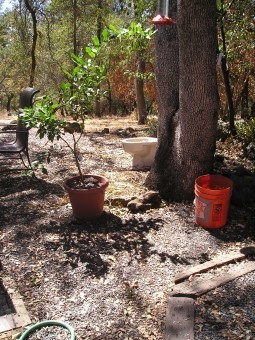
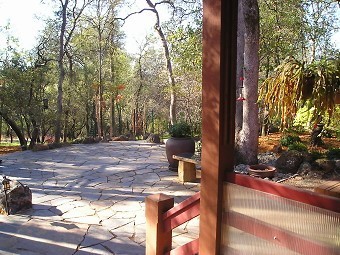
Although the steps going to the front door (previous picture) are in flagstone on a concrete slab, this portion of the patio is flagstone on a decomposed granite base so that the oak trees’ roots could breathe. Notice how much more the trees stand out and add a vertical element when beneath them is uncluttered.
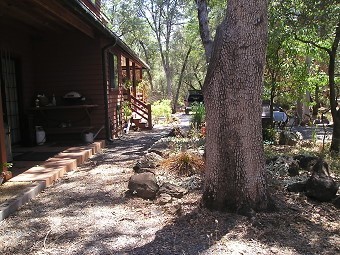
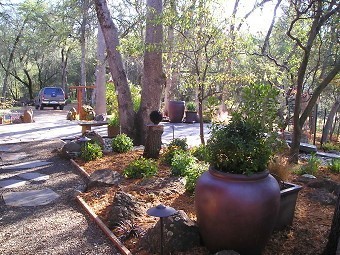
Simplifying and strengthening the lines creates a landscape with much more impact. This is achieved by eliminating the “ring” of rocks from the existing landscape, and re-placing each stone by choice and with intention. (The Japanese ask each stone where it would like to be.) Parallel header boards magnify the strong line effect.
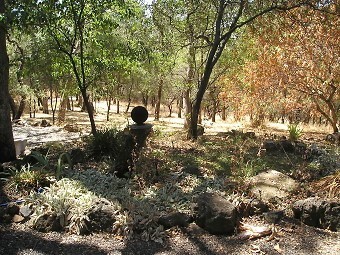
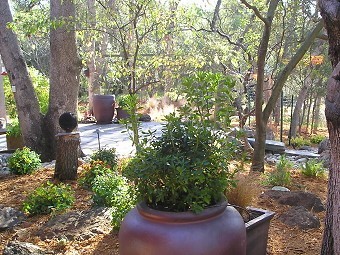
The Homeowner gave us the option of keeping the black orb in the landscape design. We wouldn’t think of eliminating it—it creates a very special focal point because it is the only completely round form in the landscape. The shapes of Heavenly Bamboo ‘Nana’ clustered around the orb repeat its roundness, emphasizing its beauty in a subtle way. Notice the other geometric shapes in the landscape (the stone slab bridge coming off the patio in the right middleground and the pots). Even with a diversity of shapes, because the colors are all earthtones, nothing looks busy.
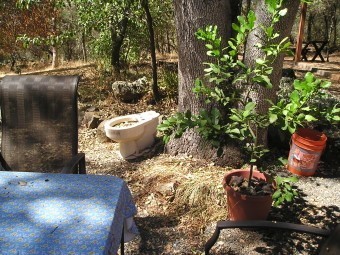

This multi-trunk oak tree has become the central point of the yard, a focal point directly outside of the kitchen window. Objects are placed around the tree to enhance its aesthetics, yet are all functional as well. Wildlife habitat is created by placing a small pot to the right of the tree which serves as a bird bath, while a hummingbird feeder hangs from its tall branches. This is good habitat for humans, too—the granite top of the bench provides cooling relief on a hot day, while the gardenia in its accompanying pot provides scents to relax.
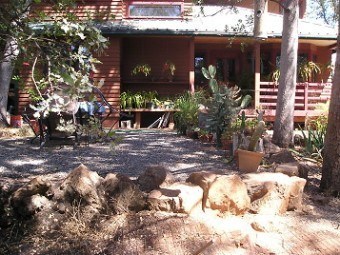
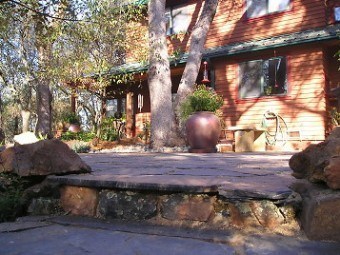
In the existing landscape, these rocks served as a barrier and inhibited the homeowners from walking out into their yard. The introduction of steps to the patio encourages the homeowners to use their yard more often. The rocks used to hold up the steps are all volunteer rocks which were pulled out of the “rings” of rocks mentioned previously. The use of rocks or other materials which naturally occur on-site (volunteers) greatly contributes to the naturalness of a landscape.
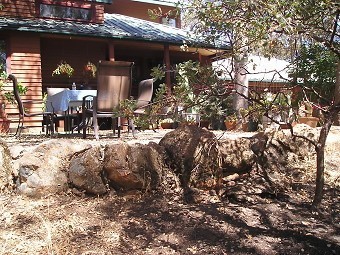
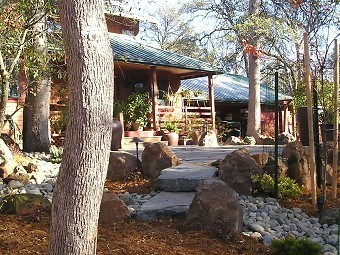
Landscape designers often find it challenging to landscape under oak trees, due to the difficulty of gardening in their heavy shade and the possibility of harming the trees by disturbing their roots. In this case, a dry stream bed was the perfect solution. In Japanese gardens, not only are the rocks asked where they would like to be placed, but how they would like to sit (vertically or horizontally). These rocks want to be vertical–to complement the horizontality of the heavy slabs of rock which form a bridge from the patio to the landscape.